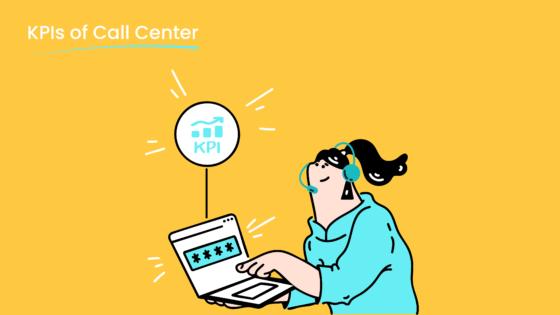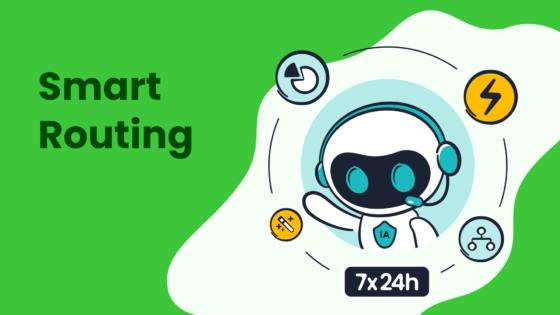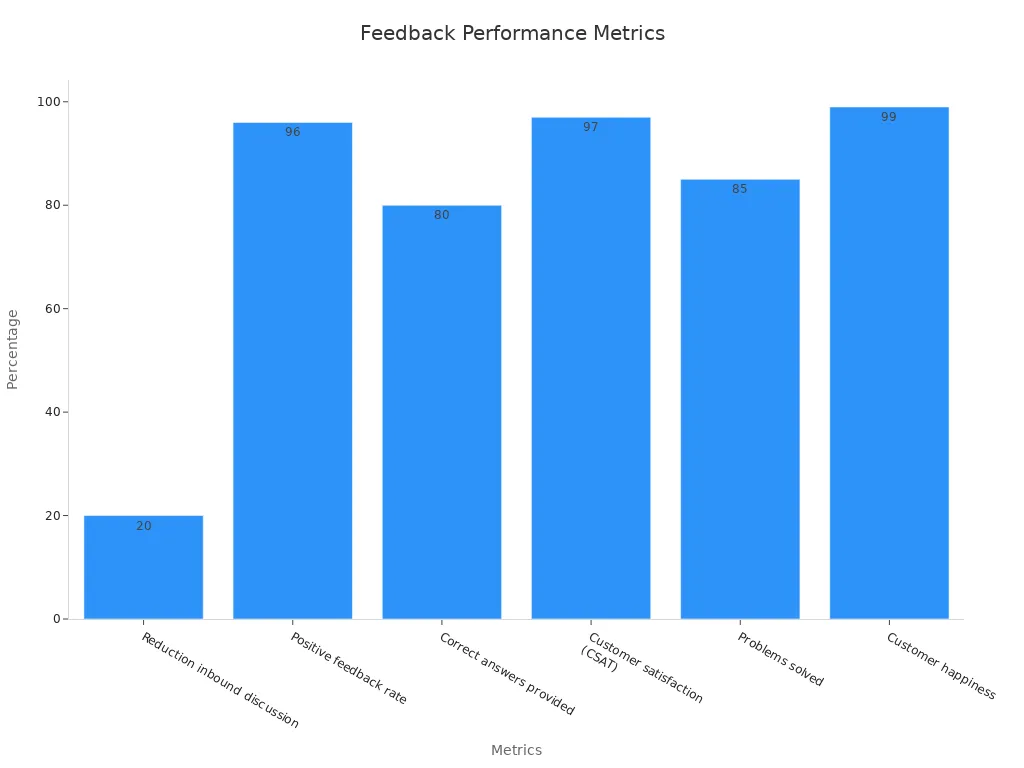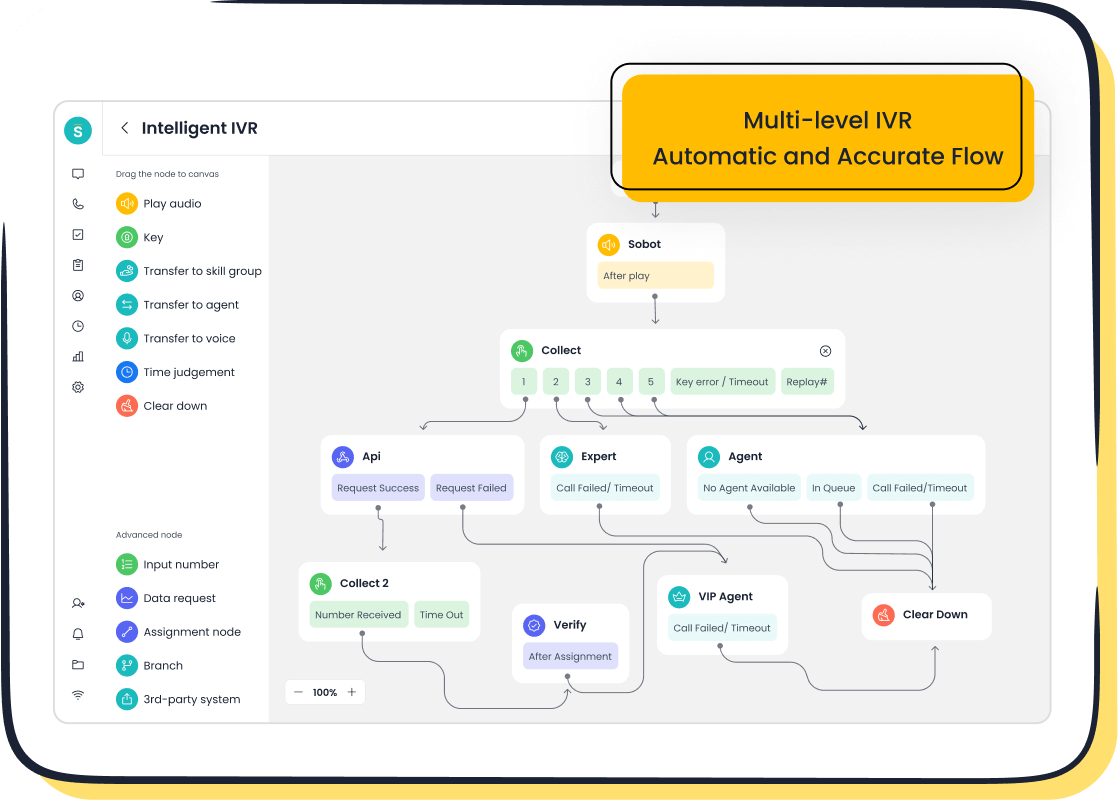Steps to Effectively Measure CSAT Scores in 2025

Understanding "what are CSAT scores" is essential for evaluating customer satisfaction effectively. CSAT, or Customer Satisfaction Score, measures how satisfied your customers are with your products or services. You calculate it using the CSAT calculation formula: (Number of satisfied customers ÷ Total number of survey responses) × 100. For example, if you receive 400 positive responses out of 500 total, your CSAT score is 80%.
Accurate CSAT measurement plays a vital role in business success. Industries like consulting lead with an average CSAT score of 84, while communication & media lag at 22, showing room for improvement. By tracking CSAT, you can identify gaps and enhance customer satisfaction, which strengthens loyalty and drives growth. Tools like Sobot's solutions simplify this process, enabling you to stay competitive in a rapidly evolving market.
What Are CSAT Scores and Why Do They Matter?
Definition of Customer Satisfaction Score (CSAT)
CSAT, or Customer Satisfaction Score, is a simple yet powerful metric that measures how satisfied your customers are with your products or services. It is expressed as a percentage and calculated using the formula:
(Number of satisfied customers ÷ Total number of survey responses) × 100.
Typically, customers rate their satisfaction on a scale of 1 to 5, with the highest values (4 and 5) indicating satisfaction. Scores above 80% reflect excellent customer satisfaction, while scores between 60% and 80% suggest room for improvement. Scores below 40% highlight significant challenges that require immediate attention. This metric provides a clear snapshot of customer sentiment, helping you identify areas that need enhancement.
Importance of CSAT in Customer Service and Business Growth
Your CSAT score directly impacts your business's success. Satisfied customers are more likely to remain loyal, spend more, and recommend your brand to others. For instance, satisfied customers typically spend 140% more than dissatisfied ones. Additionally, a 1% increase in satisfaction scores can improve retention rates by 5%. High CSAT scores also create a "satisfaction buffer," making customers more forgiving during service failures. Conversely, low scores can lead to customer churn, with over 80% of dissatisfied customers likely to switch to competitors. By prioritizing customer satisfaction, you can drive growth, improve loyalty, and boost revenue.
| Evidence | Implication |
|---|---|
| Satisfied customers spend 140% more than dissatisfied ones. | Higher CSAT scores lead to increased revenue. |
| A 1% increase in CSAT improves retention rates by 5%. | Better satisfaction drives customer loyalty. |
| Over 80% of customers churn without good CX. | Maintaining high CSAT prevents revenue loss. |
Applications of CSAT in Industries Like Retail, E-commerce, and Customer Support
CSAT plays a vital role across various industries. In retail, luxury brands often achieve scores above 85%, reflecting their focus on premium customer experiences. E-commerce businesses maintain an average CSAT score of 80%, with features like same-day shipping boosting satisfaction by 20%. In customer support, CSAT helps measure the effectiveness of service teams. For example, hassle-free returns can increase satisfaction by 18%, while poor chatbot implementation may decrease it by up to 25%. By tracking CSAT, you can tailor your strategies to meet customer expectations and stay competitive in your industry.
Steps to Calculate Customer Satisfaction Scores

Designing Effective CSAT Surveys for Actionable Insights
Creating a well-designed CSAT survey is the first step in accurately measuring customer satisfaction. A good survey ensures you collect meaningful data that reflects your customers' true experiences. To achieve this, follow these steps:
- Planning and Setting Objectives: Define clear goals for your survey. For example, are you measuring satisfaction after a purchase or a customer service interaction? Clear objectives help you focus on the right questions.
- Choosing the Right Audience: Select a representative sample of your customers. This ensures your results reflect the broader customer base.
- Effective Question Design: Use simple, unbiased questions. For instance, ask, "How satisfied were you with your recent purchase?" and provide a 5-point scale for responses.
- Data Collection Methods: Distribute surveys through channels your customers prefer, such as email, SMS, or live chat. Tools like Sobot's Omnichannel Solution make this process seamless by integrating multiple communication platforms.
- Data Analysis and Reporting: Once responses are collected, analyze the data to uncover trends and actionable insights.
💡 Tip: Regularly update your CSAT survey to align with changing customer expectations. For example, adapting questions to reflect new product features can improve relevance and response rates.
A staggering 98% of surveys fail due to poor design, biases, or low response rates. Avoid these pitfalls by focusing on clarity, simplicity, and relevance. This approach ensures your CSAT survey delivers actionable insights that drive improvement.
Collecting Feedback Through Omnichannel Solutions Like Sobot
Gathering customer feedback effectively requires meeting your customers where they are. Omnichannel solutions, such as Sobot's platform, streamline this process by integrating multiple communication channels into one unified system. Here's how it works:
- Unified Feedback Collection: Sobot's Omnichannel Solution allows you to collect CSAT survey responses from email, social media, live chat, and even WhatsApp. This ensures you capture feedback from a diverse audience.
- Real-Time Insights: With Sobot, you can monitor responses as they come in, enabling you to address issues promptly.
- Enhanced Accuracy: By consolidating data from various channels, Sobot reduces the risk of duplicate or fragmented responses, ensuring accurate results.
| Metric | Result |
|---|---|
| Reduction in inbound discussion | 20% |
| Positive feedback rate | 96%+ |
| Correct answers provided | 80%+ |
| Customer satisfaction (CSAT) | 97% |
| Problems solved | 85% |
| Customer happiness | 99% |
Omnichannel solutions not only improve response rates but also enhance the quality of feedback. For example, Samsung achieved a 97% CSAT score by using Sobot's integrated platform to unify its communication channels and streamline feedback collection. This demonstrates the value of leveraging advanced tools to boost customer satisfaction.

Using the CSAT Formula to Calculate Scores Accurately
Once you've collected responses, calculating your CSAT score is straightforward. Follow these steps:
- Collect Responses: Gather feedback from your CSAT survey. For example, after a service interaction, ask customers to rate their satisfaction on a scale of 1 to 5.
- Count Positive Responses: Tally the number of responses rated as "Satisfied" (4) or "Very Satisfied" (5).
- Apply the Formula: Use the CSAT formula:
(Number of Satisfied Customers ÷ Total Number of Responses) × 100.
For instance, if you receive 100 responses, with 60 rated as 5 and 20 as 4, your CSAT score would be:
(60 + 20) ÷ 100 × 100 = 80%. - Analyze Results: Review your CSAT score to identify trends. For example, a consistent drop in scores after product launches might indicate issues with product quality or support.
💡 Example: ShopSmart, an e-commerce brand, sends CSAT surveys via email after each purchase. Over a week, they collect 200 responses, with 140 rated as positive. Using the formula, they calculate a CSAT score of 70%. This insight helps them identify areas for improvement, such as delivery speed or packaging quality.
By following these steps, you can calculate your customer satisfaction score with precision. Tools like Sobot's Voice/Call Center simplify this process by providing real-time analytics and automated reporting, ensuring you stay informed about your customers' experiences.
Interpreting and Analyzing CSAT Results
Understanding What Your CSAT Score Reveals About Customer Satisfaction
Your CSAT score provides a snapshot of how satisfied your customers are with your products or services. Scores between 70% and 80% typically indicate strong satisfaction levels, while anything below 60% signals areas needing immediate attention. For example, if 80 out of 100 respondents in a CSAT survey report satisfaction, your score is 80%, reflecting a healthy customer sentiment.
Monitoring this metric regularly helps you stay informed about customer satisfaction trends. It also allows you to address issues promptly, ensuring your customers feel valued. CSAT complements other customer satisfaction metrics like Net Promoter Score (NPS) and Customer Effort Score (CES), offering a more comprehensive view of customer loyalty. By analyzing these metrics together, you can better understand customer behavior and refine your strategies for improvement.
Identifying Trends and Patterns in Survey Responses
Analyzing trends in CSAT survey responses reveals valuable insights into customer preferences and behaviors. For instance:
- Shifts in satisfaction scores can highlight areas for improvement, such as product quality or service speed.
- Emerging opportunities, like growing interest in eco-friendly products, can guide innovation.
- Changes in scores after marketing campaigns help you evaluate their effectiveness and allocate resources efficiently.
Segmenting your CSAT data by customer demographics or journey stages uncovers specific patterns. For example, younger customers might prioritize digital support, while older customers may value phone-based assistance. Tools like Sobot's Omnichannel Solution simplify this process by consolidating feedback from multiple channels, enabling you to identify trends with ease.
Leveraging Sobot's Voice/Call Center for Real-Time Data Analysis

Real-time data analysis is crucial for interpreting CSAT results effectively. Sobot's Voice/Call Center offers advanced analytics that allow you to monitor customer satisfaction in real time. This feature helps you address issues as they arise, preventing dissatisfaction from escalating.
With capabilities like call tracking and AI-powered insights, Sobot's platform enables you to analyze CSAT scores across different customer touchpoints. For example, you can track satisfaction levels during support calls and identify areas where agents excel or need improvement. Additionally, the system's global time zone support ensures you can collect and analyze data from customers worldwide, enhancing your ability to deliver personalized service.
By leveraging Sobot's tools, you gain actionable insights that drive better decision-making and improve customer satisfaction outcomes.
Benchmarking CSAT Scores Against Industry Standards
Why Benchmarking Is Critical for Customer Satisfaction Improvement
Benchmarking your CSAT scores against industry standards helps you understand where your business stands in the competitive landscape. It provides a clear context for customer feedback, enabling you to identify strengths and weaknesses. For example, if your CSAT score is 76% in the insurance sector, which averages 76+, you are meeting the standard but have room to excel.
By comparing your performance to industry leaders, you can pinpoint areas for improvement. This process uncovers actionable insights that guide meaningful changes in your operations, products, or services. For instance, the "Customer Service Quality Benchmark Report" highlights that software and e-commerce companies achieve an average CSAT score of 89%. If your score falls below this, you can focus on enhancing customer interactions to close the gap.
Benchmarking acts as a roadmap, helping you prioritize efforts where they will have the most impact. It ensures your strategies align with customer expectations and industry trends.
Finding Industry-Specific CSAT Benchmarks for Comparison
Different industries have unique CSAT benchmarks. Understanding these benchmarks allows you to set realistic goals. For instance:
- Insurance: Average CSAT score is 76+, slightly below the "great" threshold of 80+.
- Social Media: Scores average around 73, reflecting lower satisfaction levels.
- Travel Industry: Scores hover at 76, indicating slightly above-average satisfaction.
| Industry | Average CSAT Score | Benchmark Consideration |
|---|---|---|
| Insurance | 76+ | Below great (80+) |
| Social Media | 73 | Low satisfaction scores |
| Travel Industry | 76 | Slightly above average |
Metrics like Net Promoter Score (NPS) and Customer Effort Score (CES) complement CSAT benchmarks. For example, Starbucks uses these metrics to refine its customer experience, demonstrating how benchmarking drives improvement. Tools like Sobot's analytics provide industry-specific insights, helping you compare your performance effectively.
Setting Realistic Goals Using Sobot's Analytics Tools
Setting achievable goals starts with understanding your current CSAT score and industry benchmarks. Sobot's analytics tools simplify this process by offering real-time data and actionable insights. For example, Sobot's Voice/Call Center tracks customer satisfaction during calls, helping you identify areas for improvement.
With Sobot, you can monitor trends, segment data by demographics, and analyze customer feedback across channels. This comprehensive approach ensures your goals are both realistic and impactful. For instance, if your CSAT survey reveals low satisfaction with response times, Sobot's AI-powered solutions can help you streamline workflows and improve efficiency.
By leveraging Sobot's tools, you can set measurable objectives, track progress, and continuously refine your strategies to achieve higher CSAT scores.
Strategies to Improve Customer Satisfaction Scores

Enhancing Customer Service Training with Sobot's Solutions
Improving customer service training is one of the most effective ways to boost your CSAT scores. Well-trained agents handle inquiries efficiently, resolve issues faster, and create positive customer experiences. Sobot's Voice/Call Center provides tools that simplify training and enhance agent performance.
- Unified Workspace: Sobot's platform consolidates customer data, enabling agents to access detailed histories during training sessions. This helps them understand customer needs better.
- AI-Powered Insights: The system uses AI to analyze call data, identifying areas where agents excel and where improvement is needed. For example, sentiment analysis highlights emotional cues in customer interactions, helping agents refine their communication skills.
- Real-Time Monitoring: Supervisors can monitor calls live, offering immediate feedback to agents. This ensures training remains practical and focused on real-world scenarios.
💡 Tip: Use Sobot's analytics tools to track agent performance over time. For instance, Samsung improved agent efficiency by 30% using Sobot's solutions, which contributed to their impressive 97% CSAT score.
Addressing Pain Points Identified in Customer Feedback
Customer feedback is a goldmine for identifying pain points that impact satisfaction. By analyzing feedback, you can uncover recurring issues and implement targeted solutions. Sobot's tools make this process seamless by automating feedback collection and analysis.
| Insight | Actionable Steps |
|---|---|
| Long Wait Times | Implement strategies to reduce wait times based on negative CSAT feedback. |
| Trends and Patterns | Use insights from feedback to prioritize impactful fixes in support responsiveness and product features. |
| Emotional Context | Categorize comments as positive, negative, or neutral to understand customer sentiment. |
Sobot's Voice/Call Center uses natural language processing and sentiment analysis to identify common themes in feedback. For example, if customers frequently mention long wait times, you can adjust workflows to improve response speed. Performance reports also provide auto CSAT scores, offering actionable insights for enhancing customer experiences.
💡 Example: A retail company used Sobot's tools to analyze feedback and discovered that customers valued faster returns. By streamlining their return process, they increased satisfaction by 18%.
Implementing Proactive Support Strategies Using Sobot's Voice/Call Center
Proactive support strategies anticipate customer needs before issues arise, improving satisfaction and loyalty. Sobot's Voice/Call Center equips you with tools to deliver proactive support effectively.
- Smart Call Routing: Automatically direct calls to the most qualified agents based on customer needs. This reduces resolution times and enhances satisfaction.
- AI-Powered Voicebot: Use AI to handle repetitive queries, freeing agents to focus on complex issues. For example, the Voicebot can provide instant answers to FAQs, improving first-contact resolution rates.
- Time Zone Support: Offer personalized service by analyzing customer data based on their time zones. This ensures timely responses and builds trust.
💡 Tip: Combine proactive support with real-time monitoring to address issues as they arise. For instance, Sobot's platform tracks call data globally, enabling you to identify trends and adjust strategies quickly.
By implementing these strategies, you can create a seamless customer experience that drives higher CSAT scores. Samsung's success with Sobot's solutions demonstrates the power of proactive support in achieving exceptional satisfaction rates.
Monitoring and iterating on improvement efforts for sustained growth
Improving your CSAT score is not a one-time effort. It requires continuous monitoring and iterative improvements to ensure sustained growth. By analyzing data trends and implementing feedback loops, you can refine your strategies and adapt to changing customer expectations.
Key Metrics to Monitor for Long-Term Success
Tracking the right metrics helps you measure the effectiveness of your efforts. These metrics provide insights into customer satisfaction and areas for improvement:
| Metric | Description |
|---|---|
| Customer Satisfaction Scores | Measures satisfaction before and after changes based on feedback. An increase indicates success. |
| Net Promoter Score (NPS) | Gauges customer loyalty and likelihood to recommend. Changes in NPS reflect feedback impact. |
| Customer Effort Score (CES) | Measures ease of interaction. A decrease suggests improved user experience. |
| User Engagement Metrics | Includes usage frequency and feature adoption rates. Increases indicate positive response. |
| Feedback Response Times | Measures efficiency of feedback acknowledgment. Shorter times correlate with higher satisfaction. |
| Retention and Churn Rates | Evaluates impact of changes on customer loyalty. |
| Qualitative Feedback | Gathers deeper insights through follow-up surveys or interviews. |
| Product Performance Metrics | Includes bug reports and error rates to indicate effectiveness of improvements. |
Regularly reviewing these metrics ensures you stay informed about your progress. For example, shorter feedback response times often lead to higher CSAT scores, as customers feel valued and heard.
Steps to Implement Iterative Feedback Loops
To achieve sustained growth, you need a structured approach to implementing feedback. Follow these steps:
- Prioritize and Plan: Evaluate customer feedback based on its impact and feasibility. Focus on high-impact areas first, such as improving response times or resolving recurring issues.
- Communicate Changes: Keep your customers informed about updates and improvements. Transparency builds trust and shows that you value their input.
- User Testing: Before rolling out changes, conduct thorough testing to ensure they meet customer expectations. For example, test new features with a small group of users to gather initial feedback.
- Continuous Monitoring: Regularly assess the impact of your changes. Use tools like Sobot's Voice/Call Center to track real-time data and identify areas for further improvement.
💡 Tip: Use Sobot's analytics tools to segment your data by demographics or customer journey stages. This helps you tailor your strategies to specific customer needs.
Real-World Example: Samsung's Iterative Approach
Samsung's success with Sobot's solutions highlights the importance of monitoring and iteration. By unifying communication channels and analyzing customer feedback, Samsung achieved a 97% CSAT score. They continuously refined their processes, such as reducing response times and offering personalized support, to maintain high satisfaction levels. This iterative approach ensured long-term growth and customer loyalty.
Benefits of Continuous Improvement
Iterative efforts lead to several benefits, including:
- Enhanced Customer Loyalty: Regular improvements show customers that you care about their experience, increasing their trust in your brand.
- Higher CSAT Scores: Monitoring and refining your strategies help you address pain points effectively, boosting satisfaction.
- Operational Efficiency: Identifying and resolving inefficiencies improves your team's productivity and reduces costs.
By adopting a proactive mindset and leveraging tools like Sobot's Omnichannel Solution, you can create a feedback-driven culture that prioritizes customer satisfaction. This approach not only improves your CSAT score but also strengthens your competitive edge in the market.
Measuring and improving CSAT scores requires a structured approach. Follow these steps to ensure success:
- Collect feedback through concise surveys to understand customer needs.
- Include follow-up questions to identify areas for improvement.
- Share feedback with your team to encourage self-correction.
- Act on low ratings immediately to recover customer trust.
- Use tools like Sobot's Voice/Call Center to analyze trends and optimize strategies.
Continuous monitoring ensures you adapt to customer expectations. Leverage Sobot's solutions to prioritize satisfaction and drive long-term growth.
💡 Tip: Real-time coaching and proactive support can significantly boost your CSAT scores.
FAQ
What is the best time to send CSAT surveys?
Sending surveys immediately after a customer interaction works best. For example, send it after a purchase, support call, or live chat session. This ensures the experience is fresh in the customer’s mind, leading to more accurate feedback.
How can Sobot help improve my CSAT score?
Sobot provides tools like AI-powered Voicebots, omnichannel feedback collection, and real-time analytics. These features help you identify pain points, streamline workflows, and deliver personalized support. For example, Samsung achieved a 97% CSAT score using Sobot’s solutions.
What is a good CSAT score to aim for?
A score above 80% indicates excellent customer satisfaction. Scores between 60% and 80% suggest room for improvement. Anything below 60% requires immediate action to address customer concerns and improve service quality.
Can I use Sobot’s tools for benchmarking my CSAT score?
Yes, Sobot’s analytics tools provide industry-specific benchmarks. You can compare your score with competitors and set realistic goals. For instance, e-commerce businesses often aim for an average CSAT score of 80% or higher.
How does Sobot ensure accurate feedback collection?
Sobot’s Omnichannel Solution integrates multiple communication channels like email, WhatsApp, and live chat. This ensures you collect feedback from diverse sources. The platform also eliminates duplicate responses, providing accurate and actionable insights.
💡 Tip: Use Sobot’s real-time monitoring to track feedback trends and address issues promptly.
See Also
Essential Strategies for Effective Call Center Quality Management
Comprehensive Overview of Call Center Quality Management Systems
Enhancing Call Center Efficiency Through Effective Monitoring Techniques
